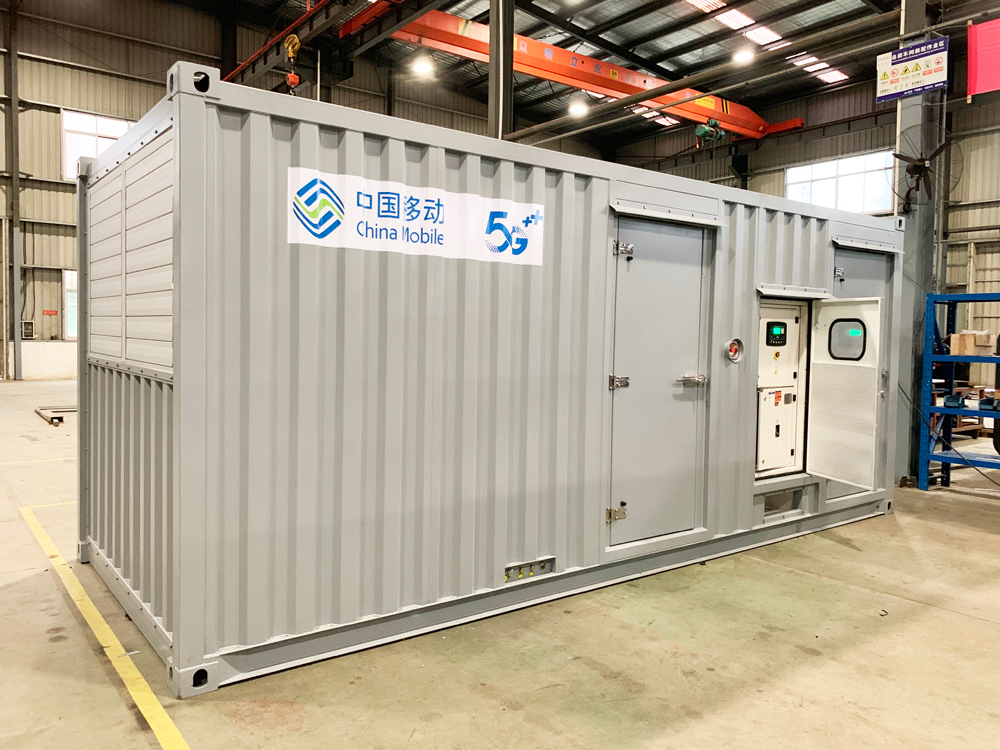Selecting and using a diesel generator in cold climates requires special attention to challenges posed by low temperatures. The following considerations are divided into two main parts: Selection and Purchasing and Operation and Maintenance.
I. Considerations During the Selection & Purchasing Phase
When purchasing a generator for cold climates, you must look for configurations specifically designed for low temperatures, not just standard parameters.
1. Engine Cold Weather Starting Capability
This is the core challenge. Low temperatures thicken engine oil, reduce battery efficiency, and can cause diesel fuel to gel, preventing startup.
- High-Power Starter Motor: Choose a model with a more powerful starter motor than standard to overcome the increased resistance of a cold engine.
- Engine Block Heater:****This is essential! It preheats the engine coolant, which indirectly warms the engine block. This reduces oil viscosity, significantly improves starting performance, and reduces wear during cold starts. Types include electric (plug-in, requires external power) and fuel-fired (consumes the generator’s own fuel).
- Oil Pan Heater: Some models come with a separate heater for the oil sump to ensure oil remains fluid.
- Intake Air Preheater (Glow Plugs or Intake Heater): Preheats the air entering the combustion chambers, aiding diesel ignition after compression.
2. Fuel System Anti-Gelling
Diesel fuel can wax (form paraffin crystals) in low temperatures, clogging filters and fuel lines.
- Fuel Heater:****Highly recommended. Usually installed on or in-line with the fuel filter(s) to prevent wax formation.
- Appropriate Diesel Fuel Grade: Select a diesel grade with a lower pour point suitable for the historical low temperatures of the location (e.g., #-10, #-20, #-35 Diesel). The generator must be designed to use these grades.
- Dual-Stage Fuel Filter/Water Separator: Some professional-grade units come equipped with a dual-stage fuel filter that includes water separation and heating capabilities.
3. Battery Performance & Warm-Keeping
Cold temperatures significantly reduce battery capacity and discharge ability.
- High-Capacity Battery: Select a battery with a higher Amp-hour (Ah) rating than standard requirements to provide sufficient cranking current.
- Battery Blanket/Heater: An electric heating wrap around the battery maintains it at a suitable operating temperature, ensuring discharge performance.
- High-Quality Battery: Choose a reliable, high-quality battery brand known for performance in cold environments.
4. Unit Construction Materials & Protection Rating
- Anti-Corrosion Treatment: Cold regions often use road salt, which is highly corrosive. The unit’s casing, radiator, pipes, etc., should have good anti-rust and anti-corrosion treatment (e.g., galvanization, powder coating).
- IP (Ingress Protection) Rating: If the unit will be placed outdoors, consider a rating that protects against rain and snow (e.g., IP23 or higher). However, even with a good rating, it is highly recommended to place the generator in a dedicated insulated enclosure or shelter.
5. Control System
- Cold Start Mode: Advanced controllers have a pre-programmed “Cold Start Mode” that activates heating elements first and only cranks the engine once conditions are met, protecting the engine.
- Remote Monitoring & Start: Optional remote monitoring capabilities allow you to check status and initiate pre-heating/starting from indoors, avoiding exposure to harsh weather for operation.
6. Cooling System
- Note: In extreme cold, the engine may struggle to reach its optimal operating temperature. Look for systems with adjustable radiator shutters that can be partially closed during operation in low temperatures to reduce heat loss and help the engine warm up faster.
II. Considerations During Operation & Maintenance Phase
Correct operation and maintenance are crucial for generator reliability in cold climates.
1. Daily Operation & Shutdown
- Use Low-Pour-Point Diesel: Always use the correct diesel grade for the current temperatures. Keep the fuel tank as full as possible to prevent condensation inside the tank (which can freeze).
- Use Diesel Anti-Gel Additives: If the correct diesel grade is unavailable, you must add anti-gel additives to the fuel. Add the additive to the tank before refueling for proper mixing.
- Regular Exercise Runs: Even if not needed, run the generator under load for at least 30 minutes weekly. This lubricates components,驱除潮气 (drives out moisture – prevents condensation), charges the battery, and ensures readiness.
- Complete Warm-Up: After starting, let the generator run at no-load or low-load for a period (typically 5-10 minutes) until coolant temperature and oil pressure reach normal ranges before gradually applying load. Never apply a heavy load immediately after starting.
2. Storage & Maintenance
- Indoor Storage: If possible, storing the generator in a heated or insulated room is the best solution. The room temperature should be maintained above freezing.
- Use a Protective Enclosure: If outdoor storage is necessary, use a specialized insulated enclosure or canopy. This protects against wind/snow and helps retain engine heat.
- Use Winter-Grade Oil: Use lower-viscosity oil suitable for cold temperatures (e.g., SAE 5W-30, 10W-30) as specified in the engine manual. This oil flows better at low temperatures, reducing cranking resistance.
- Keep the Battery Charged: Regularly check the battery charge level. Use a maintenance (float) charger if necessary to keep it fully charged.
3. Emergency Preparedness
- Backup Starting Plan: Have a backup starting plan, such as a portable jump starter pack, in case the main battery fails.
- Clearing Snow & Ice: After snowstorms, promptly clear snow and ice from the generator, ensuring air vents, the radiator, and the exhaust outlet are not blocked.
Summary Checklist (Confirm with Supplier When Purchasing)
- ✅ Essential: Engine Block Heater.
- ✅ Recommended: Fuel Heater / Dual-stage heated fuel filter/water separator.
- ✅ Recommended: Battery Heater Blanket and High-Capacity Battery.
- ✅ Confirm: Unit is compatible with low-pour-point diesel fuels (e.g., #-35).
- ✅ Confirm: Control system has a cold start program/sequence.
- ✅ Confirm: Casing has good anti-corrosion treatment.
- ✅ Advised: Plan for an insulated room or protective enclosure installation.
In summary, the two core themes for selecting a diesel generator for cold regions are ”Heating” and ”Anti-Gelling”. Investing in these specialized cold-weather features upfront will pay off with (extremely high operational reliability) and longer equipment life in extreme environments, preventing major losses due to power failure.
Post time: Sep-22-2025

















